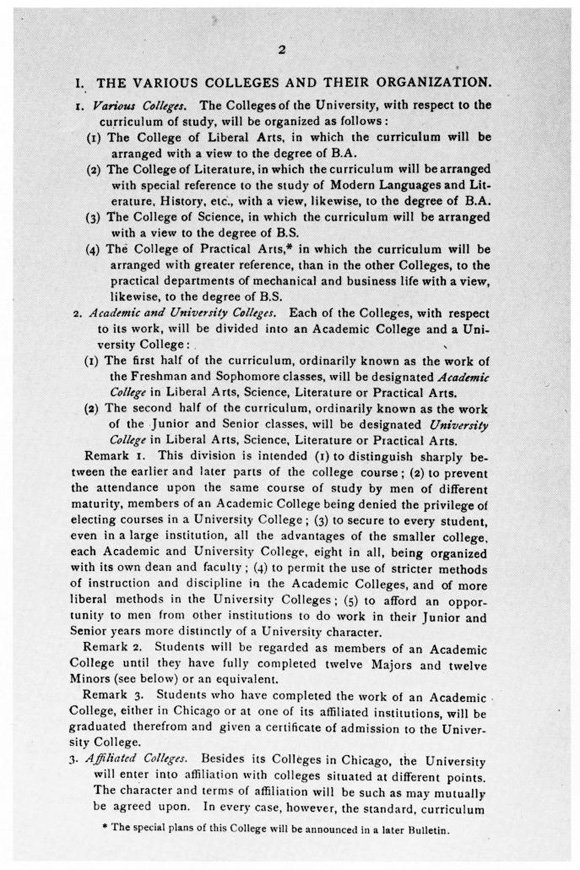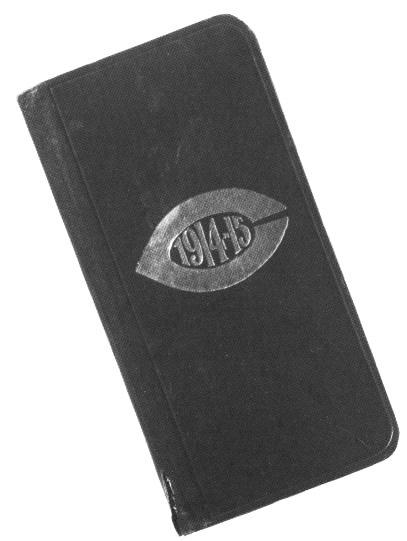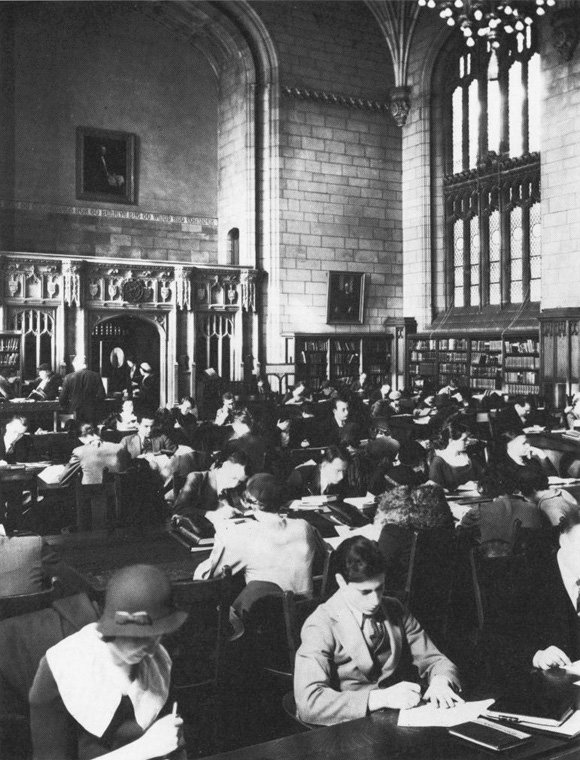An Era of Reforms
After Judson retired in 1923, Ernest DeWitt Burton, chairman of the Department of 7ew Testament Literature and library director, was named the University's third president. During his brief two-year tenure, Burton instituted an impressive array of administrative reforms, the most important of which was naming Ernest Hatch Wilkins the first Dean of the Colleges. As dean, Wilkins hired assistant deans to advise students, inaugurated the first orientation week, and introduced the University's first general education courses, among them "The Nature of the World and of Man."
Wilkins also questioned the four-year college and credit system, stating that "there is no inherent logical necessity for the existence of the four-year college." The goal of college education he said, should not be to commit students arbitrarily to a fouryear plan, but to provide a liberal education which could be verified through comprehensive exams. Before Wilkins and Burton could institute these changes, however, Burton died suddenly at the age of sixty-nine and Wilkins resigned, leaving an impressive legacy and the seeds for much future debate.
Max Mason, Burton's successor as president from 1925 to 1928, appointed a board to review the faculty's plans to organize the colleges around comprehensive exams, but the day before the committee's report was to be discussed, Mason startled everyone by announcing his resignation for a position at the Rockefeller Foundation. His departure left the University without a president but not without direction. Mason's support for curricular reforms and his belief "that opportunity and not compulsion should be the spirit in the undergraduate college" found wide acceptance among the faculty.
The arrival of Robert M.
Hutchins on the Quadrangles brought to the University a young educator
with a growing commitment to the ideal of general education. In 1930,
Hutchins gave his approval to a reconfiguration of the University's
undergraduate programs. What were then called the Colleges of Arts,
Literature, and Science were merged into a single College. Like his
predecessor Max Mason, Hutchins disdained the traditional grade and
credit system. In its place Hutchins proposed the New Plan, which followed
the proposals of the 1920s in instituting a system of comprehensive
examinations. Entering students took placement exams to determine the
number of courses required before they were allowed to take the "comps."
After the "comps," students would complete their education by specializing
in upper-level courses and two years later receive their bachelors'
degrees. More experiments followed. In 1937, a Four-Year College spanning
the last two years of high school and the first two years of college
was created. In 1941, the entire College was reshaped into a four-year
institution on the same basis, with students admitted after the second
year of high school and graduated with an AB after two years of collegiate
work. New comprehensive examinations were devised, and a series of comprehensive
courses was developed, including the famous OII, "Observation, Interpretation,
and Integration." In 1946, the College faculty itself became a separate
academic body, many of its members being appointed exclusively to offer
undergraduate instruction.
The cumulative effect of these changes on students of the "Hutchins College," or to be more accurate, the succession of "Hutchins Colleges," was impressive. The curricular reforms brought students into direct contact with basic texts in literature, the social sciences, and natural sciences and gave them an opportunity to read these works closely and critically. The students offered the strongest testimony to the success of the program, for in retrospect it was their generation that seemed most enthusiastic about the college experience.

President Harper's earliest outline for the University's undergraduate program was characteristically complex. While hopes for a College of Practical Arts were not realized, training in "business life" was later offered in the College of Commerce and Administration organized in 1901.

Compiled by the student Government, the Handbook was given to all incoming students to familiarize them with the choices available in extracurricular life. Interested students could refer to the handbook for information on athletics, religion, publications, interest groups, and much more. If these organizations did not provoke interest, Student Government president Emil Johnson urged students to "form one that does."

Prospective students reading a reporter's version of President Mason's ideas must have found them unusually attractive. © Copyrighted 1927, Chicago Tribune Company, all rights reserved, used with permission.

